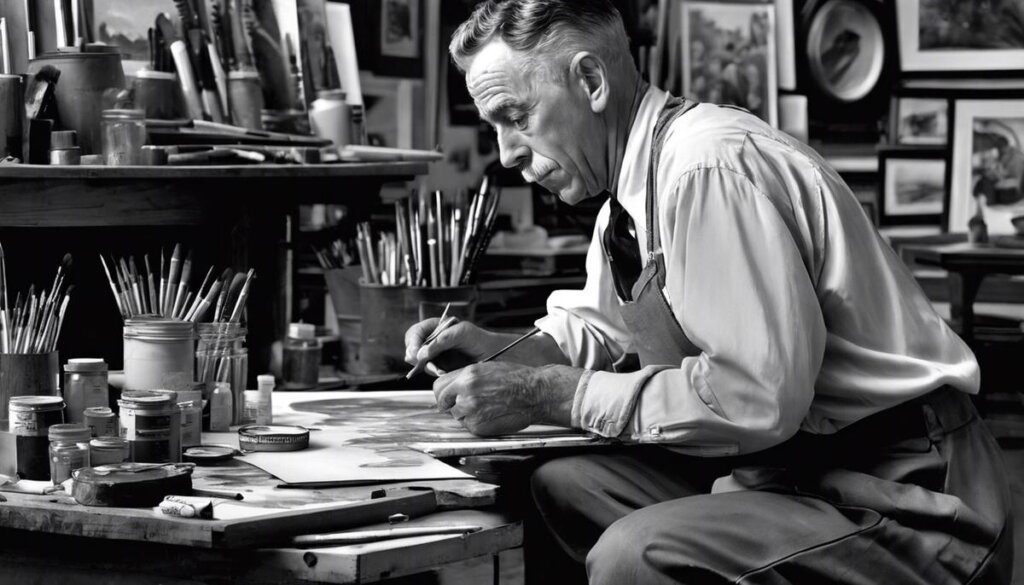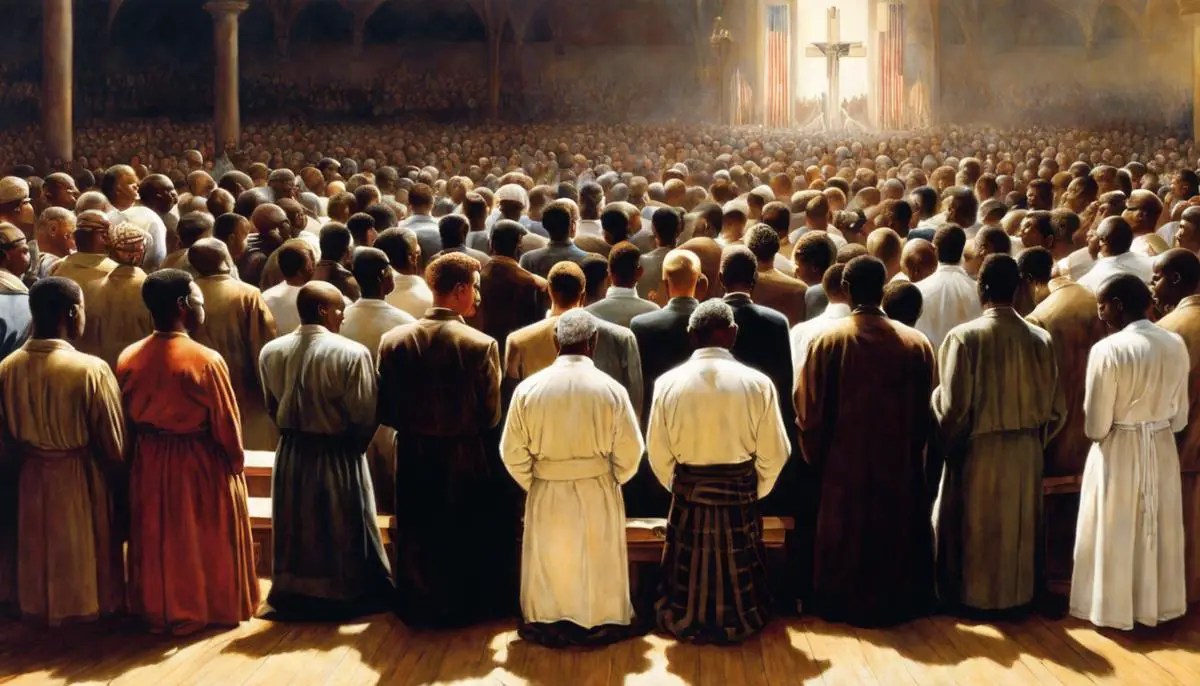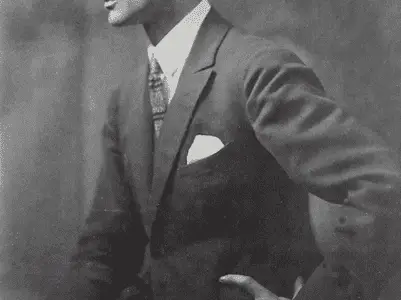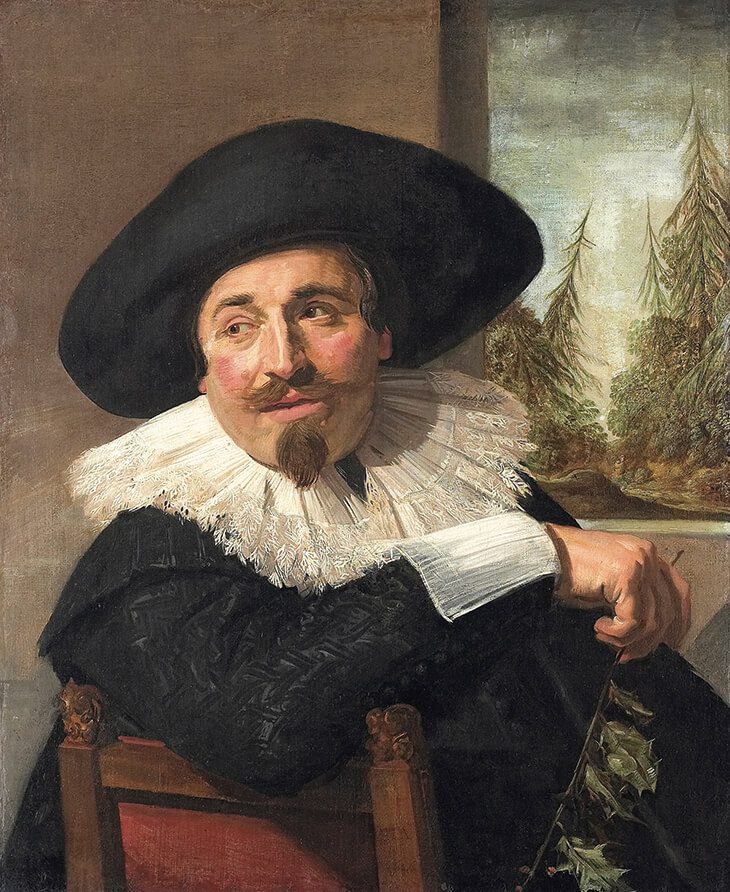Exploring Norman Rockwell’s Freedom to Worship

Norman Rockwell, a household name in North America and much of the world, possesses a distinctive artistic style that seamlessly blends brilliant narrative elements with deep human emotions. Born into a modest household, Rockwell’s journey has continually defied humble beginnings to engrave his name permanently among the pantheons of great American artists. Ingrained in the strokes of his brush amid alternating hues and space is a personal philosophy deeply invested in the human experience. A testament to his timeless greatness is the Freedom series, a quartet of iconic paintings that dive into American self-perception during the cypher of World War II. ‘Freedom to Worship,’ the subtext of our discussion, offers a nuanced exploration of religious plurality that transcends its historical context.
Norman Rockwell – The Man and the Artist
The Artistic Journey of Norman Rockwell: Revealing a Painter’s Picture-Book World
In the delightful labyrinth of artistry, Norman Rockwell stands as a master storyteller, narrating the nuances of everyday life through a palette of varying hues. His works, an artistic genius rendered on canvas, captured 20th-century interpretations of American culture, sewn beautifully within the patches of artistic charm.
Born on February 3, 1894, in the small nook of New York City, Rockwell was destined to paint. Sinuously waltzing with brushes in the pandemonium of colours, Rockwell’s repertoire was shaped by his early life experiences. The attention to detail and the veracity of his illustrations sprung from the myriad of emotions he experienced throughout his youth, living in a multicultural metropolis that was teeming with life.
Rockwell, an introverted child, found solace and companionship in the creation of art. His innate talent was spotted and nourished right from the outset. Desperate to express himself, he enrolled at the Chase Art School at the tender age of 14, leading to further studies at the National Academy of Design and the Art Students League. These prestigious institutions allowed young Rockwell to mingle with prominent artists of the time, indirectly influencing his classic style.
Despite creating thousands of art pieces over a remarkable 64-year career, Rockwell will forever be remembered for capturing the very essence of America on the covers of the Saturday Evening Post. His exceptional portrayal of American life and culture frenzied his art popularity, resonating across multiple generations.
With each art piece, nostalgia manifests and reverberates, as Rockwell’s magical insignia opens up a Pandora’s box full of history. His works sketch common scenarios with a touch of eccentricity; American boyhood, bustling diners, chaotic family meals, and integral historical moments, each proving Rockwell’s ability to add a sprinkle of conversational tone to the canvas.
Looking beyond the idyllic scenes Rockwell is famous for, his background and experiences provided an intriguing subtext to his works. Beneath the surface lies a profound exploration of America’s social and cultural landscape during his lifetime. He used his art as a powerful medium to address significant issues such as racism, poverty, and war, blending the contours of his experiences with iconic American milestones.
Rockwell’s artistic journey was undeniably influenced by his environment and experiences, shaping his renowned style of humanising everyday scenes. His brush traveled through the streets of New York City, across war-torn landscapes and into the hearts of the American public, ultimately manifesting in a gallery of artworks that still convey a compelling narrative to this day.
From the humble streets to the pinnacle of artistic grandeur, Norman Rockwell’s tale of artistry pulsates in every stroke, every color, and every narrative he skilfully spun. His legacy serves as an incredible testament to how one’s background and experiences contribute significantly to their creative expression in art.

The Freedom Series – Overview
Title:Rockwell’s Freedom Series: A Journey into the Heart of Humanity
Norman Rockwell, an emblematic figure in American culture, was renowned not only for his adeptness at capturing everyday life but also for expressing profound socio-cultural themes through his art. Among his noted works, the Freedom series has secured a unique place, resonating with powerful emotions and stirring discourses on the essence of freedom.
Unveiled against the poignant backdrop of the Second World War, this series constituted four distinctive paintings, collectively known as the Four Freedoms. The inspiration for this tremendous body of work was a speech given by President Franklin D. Roosevelt, detailing enduring ideals of human rights: Freedom of Speech, Freedom of Worship, Freedom from Want, and Freedom from Fear.
The strength of Rockwell’s Freedom series lies in its ability to personify these abstract ideals, capturing their essence in tableaus of ordinary American life. Each illustration communicates a particular freedom in its most candid representation, casting ordinary American citizens as the protagonists of this renowned narrative. In his characteristic knack for detail, Rockwell meticulously showcased the subtle elements of daily life to illustrate these lofty concepts, offering an accessible interpretation that allowed the everyday person to relate.
Moreover, the Freedom series’ significance transcends its initial introduction during the tumultuous war years, resonating with contemporary audiences. This longevity is testament not only to Rockwell’s masterful storytelling but also to the universality of the themes he addressed. His portrayal of these freedoms did not espouse a particular political ideology but rather, narrated the human experiences and emotions understood by one and all.
For instance, Freedom of Speech, depicting a worker voicing his opinion amidst an attentive crowd, serves as a reminder of the significance of expressing oneself openly without fear. Similarly, the echo of Freedom from Fear, featuring parents tucking in their children for the night, remains relevant, emphasising the need for a sense of security in every individual’s life.
Reminiscing about the essence of Rockwell’s Freedom series, it becomes clear that the brilliance of Rockwell’s paintbrush is not merely in creating pleasing aesthetics. Through the powerful narratives within his compositions, he refined his creativity and intensive observation into a social mirror, allowing society to witness and contemplate their collective connections and shared values. Indeed, one might say, Rockwell painted not just pictures but a vibrant canvas of humanity.
In conclusion, Rockwell’s Freedom series stands as an iconic testament to the basic human needs, dreams and aspirations that define us. Heralding a powerful narrative on freedom, these works continue to remind us that the ultimate spirit of freedom lies in our collective stories and shared experiences. With his uncompromising craftsmanship and unique storytelling, Rockwell turned enduring concepts into vibrant visual imageries, distilling the essence of freedom and its significance in our lives. Indeed, through his art, Rockwell deftly blurs the line between the beautiful and the profound.

Photo by christya_v on Unsplash
Freedom to Worship – Analysis
Focusing on Rockwell’s ‘Freedom to Worship,’ it can be seen that the elements and techniques used in this painting significantly contribute to its notable impact. The painting depicts worshippers from diverse religious backgrounds in a collage form, each person engaged in prayer with their own different gestures and expressions. It evokes deep emotions, symbolising universal spiritual freedom, upheld as a universal right.
One striking technique that Rockwell employed in ‘Freedom to Worship,’ is the use of light and shadow. Observers will note the balance between the play of light and darkness across the canvas, contributing an almost palpable feeling of sanctity. The skillful manipulation of light and shadow lends a dramatic effect, adding to the overall visual impact while simultaneously conveying the solemnity and seriousness of the subject matter.
Rockwell’s emphasis on individuality is another crucial element in ‘Freedom to Worship.’ The painting showcases a range of distinct faces, each with unique expressions, subtly hinting at the diversity of personal faiths. This serves to underline the fundamental message of the artwork – freedom to individual expressions of faith, regardless of the form it takes. By presenting every individual in their moment of worship, Rockwell manages to underline the multiplicity of paths to spiritual fulfillment while upholding the sanctity of each.
Notably, Rockwell masterfully uses the technique of composition in his painting. The subjects in ‘Freedom to Worship’ are tightly arranged into a composition that resembles a religious mosaic, each person merging into the collective yet retaining their distinctive identity. This technique mirrors the theme of the painting itself – unity in diversity, individual expressions contributing to a single, harmonious whole.
Another noteworthy aspect of Rockwell’s work is the use of colour. Rockwell possessed a regretted ability to employ and manipulate colours. In ‘Freedom to Worship,’ he utilised a muted palette, cleverly allowing the subjects and their expressions to take centre stage, away from any distractions of bright hues or intense contrasts.
In ‘Freedom to Worship,’ Rockwell’s use of close-up perspective offers an intimate view of the subjects, engrossed in their personal act of worship. This perspective invites spectators to join in the silent reverence, marking an empathetic connection between the artist and the viewers.
Lastly, Rockwell’s use of subtle symbolism truly distinguishes ‘Freedom to Worship.’ Each gesture, the angle of a bowed head, the close of eyes in silent prayer, all serve as coded symbols transfiguring the canvas into an embodiment of the freedom of worship.
In conclusion, it is through the creative amalgamation of these elements and techniques that Rockwell’s ‘Freedom to Worship’ conveys its poignant message. The painting stands as a testament to the power of art, not only as a vehicle of aesthetic pleasure but also as an instrument of social commentary and significant cultural discourse.

Cultural and Historical Impact of Freedom to Worship
Delving deeper into the culturally saturated depths off ‘Freedom to Worship’, one can tease apart the nuanced layers of meaning Rockwell has skilfully woven into this silent yet roaring discourse on religious freedom. It is this dexterity with his brush, this discernment of the profound encapsulated within the profoundly mundane, that propounds his place as a socio-cultural commentator par excellence.
Draw the lens closer to the smattering of worshipper profiles portrayed in the painting, diverse in their piety, and yet united in their pursuit of spiritual liberty. Each face, etched with quiet reverence, tells a multitude of stories: a convergence of diverse religious takings and personal faiths painting the canvas of a multicultural America. Here, Rockwell navigates the delicate waters of advocacy for religious freedom, a pillar of democracy, thus belting out a visual symphony of individuality and shared humanity.
This portrayal ties intimately intotohe use of chiaroscuro, a device of light and shadow that Rockwell employs to stellar effect. The play of luminescence on each face, juxtaposed with the deepened shadows, enhances an aura of sanctity, imbuing the entire composition with a serene and almost holy atmosphere which resonates with the central theme.
A closer look at the composition of ‘Freedom to Worship’ reveals further proficiencies of Rockwell’s work. He deftly arranges the figures in such a way that, despite their stylistic and symbolic differences, they meld into a unified tableau. Through this careful arrangement, Rockwell promotes a message of unity in the face of diversity.
Rockwell’s choice of a muted colour palette, a characteristic reduction of exuberance gives way to thoughtful introspection. The painting highlights not the flamboyance of faith, but the inner light of individual belief, underpinned by the austere beauty of simplicity. A close-up perspective further adds an intimate dimension to the viewing experience, passionately impressing upon the audience his belief in every individual’s right to religious liberty.
Beyond the aesthetic appeal of the painting, Rockwell invites viewers to a conversation on collective values and common bonds in society, making ‘Freedom to Worship’ not just a painting, but also a catalyst for socio-cultural discourse. Through the subtle yet potent symbolism embedded in this work, he attempts to break down religious barriers, fostering an atmosphere of tolerance and acceptance.
In conclusion, ‘Freedom to Worship’, more than being a mere artistic statement, is a mirror to society – a meticulously detailed reflection of the cultural landscape of its time. It continues to inspire and provoke thought about the concept of religious freedom decades after its creation, attesting to the timeless relevance and societal resonance of Rockwell’s most legendary series. The painting embodies the harmonious blending of beauty and profundity, a trait that distinguishes Rockwell’s art, making it a nexus of cultural expression, social commentary, and fine aesthetics.

Photo by hannahbusing on Unsplash
Norman Rockwell’s ‘Freedom to Worship’ remains not only an extraordinarily captured snapshot of a particular historical moment but also a far-reaching appeal for religious tolerance and freedom. The brilliance of form is profoundly matched with the wisdom of content, revealing complex layers of societal repercussion and a timeless narration of an inherent human right. By breaking down the composition’s language and exploring the implications of colours, symbolism and composition, we ventured deep into Rockwell’s thought process and artistic motive. Spurred by the wartime context, the painting presents its message loud and clear, articulating America’s fundamental principles through an artistic lens. Even today, ‘Freedom to Worship’ reverberates in the silent halls of cultural memory, its impact undiminished and its message as potent as ever. Rockwell’s artistry and the ethos continue to inspire, reminding every generation of the imperative freedoms that thread society together.
Recommend0 recommendationsPublished in Uncategorized







